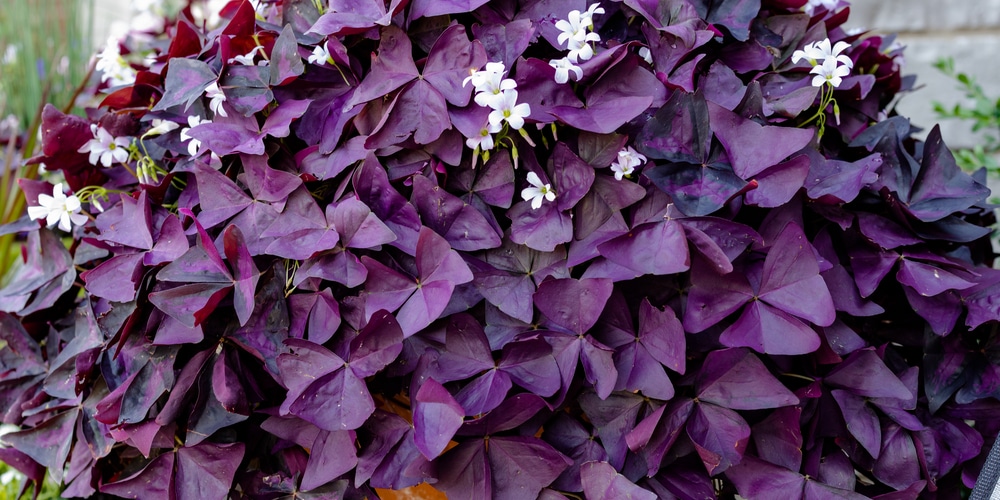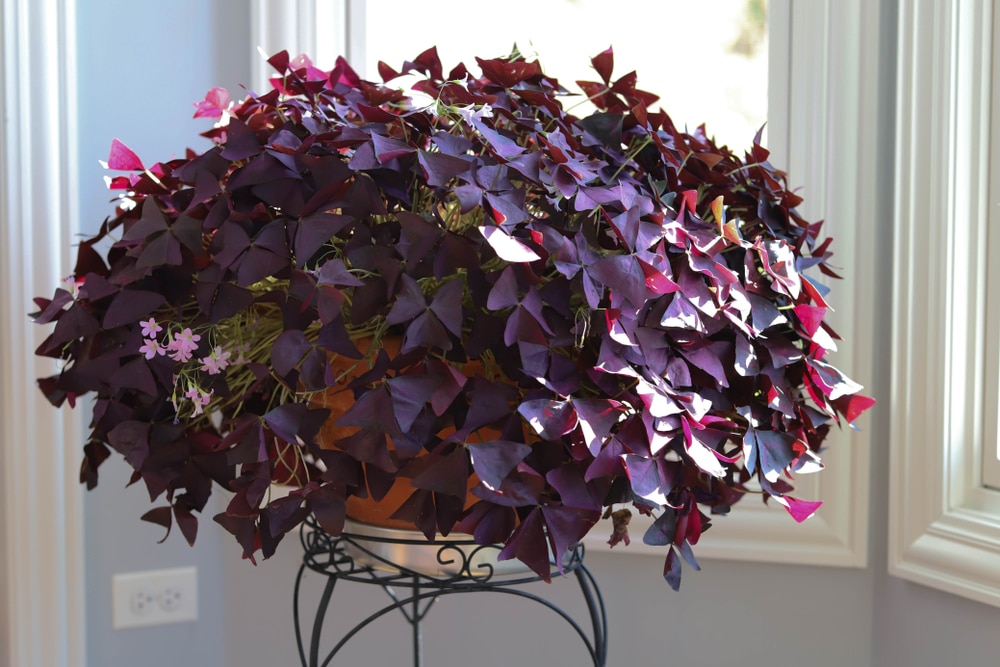The potted shamrock plant, known as oxalis, is popular for decorating around St. Patrick’s Day. But this versatile indoor plant can be used to add a touch of green to any room year-round.
It features three-sided leaves that are often mistakenly called clover. It is said to bring good luck if you’re lucky enough to find a four-leaf clover among the three-leafed oxalis. Today, the shamrock is a widely recognized symbol of Ireland.

| Botanical Name | Oxalis regnelli |
| Common Name | Shamrock plant, Good luck plant, |
| Plant Type | Perennial |
| Flower Color | Pink or white |
| Size When Mature | 6 inches |
| Bloom Time | Fall, winter, and spring |
| Sun Requirements | Full Sun to Partial Sun |
| USDA Hardiness Zones | 6 – 10 |
| Soil PH Range | 7.6 to 7.8 |
| Soil Type | Moist, well-drained |
| Water Needs | Moderate to Low |
| Native Area | Brazil, South Africa, and Mexico |
What You Need to Know About Shamrock Plant
The shamrock plant is a member of the Oxalis genus and is known for its distinctively shaped leaves. These leaves are green in color and have three leaflets that fold up at night and open when the light returns.
The shamrock plant is also known as the lucky shamrock plant and is native to South America. The shamrock plant is a popular houseplant because it is relatively easy to care for and adds a touch of spring to the indoors during the winter months.
Unlike most houseplants, the potted shamrock plant does not grow during summer. The potted shamrock plant is dormant during the summer months.
When leaves start to ‘die,’ the plant is best kept in a shady area to rest and recuperate. Depending on the variety and circumstances, the dormant time for growing oxalis houseplant can range from several weeks to several months.
The Oxalis genus is best known for its sour taste caused by oxalic acid. This chemical helps to protect the plant from being eaten by animals, as it is unpalatable to most grazers. However, ingesting large quantities of oxalic acid can be toxic to animals and humans.
Symptoms of oxalic acid poisoning include vomiting, diarrhea, and difficulty breathing. If you suspect your pet has ingested a plant from the Oxalis genus, seek medical help immediately. Although it would take a large amount of the plant to cause serious harm, it is better to be safe than sorry.
How to Care for Shamrock Plant
Here’s everything you need to know about growing and caring for a thriving Shamrock Plant.
Light
One of the most important things to remember when caring for a shamrock plant is that it requires indirect bright light. This means the plant should be placed near a window where it will receive plenty of light but not direct sunlight. The plant may benefit from a few hours of direct sun each winter season each day.
Another important consideration when caring for a shamrock plant is regular rotation. The plant should be rotated every week or two so that all sides of the plant face the light. This will help the plant to grow evenly and prevent it from becoming leggy. Too little light can cause the plant to become weak and leggy, so provide plenty of bright light when caring for your shamrock plant.
Water and Soil Needs
First and foremost, the shamrock plant prefers moist soil, but it is essential to allow the soil to dry out between waterings. Aim to water the plant twice a month during the growing season and let at least 2 inches of soil dry out before watering again. Additionally, it is best to water the plant from the bottom, as the fragile stems can become waterlogged if water from the top.
The shamrock plant prefers sandy, loose soil instead of organically fertile soil. This is because the plant doesn’t need a lot of nutrients, and the sandy soil will help drain any excess water quickly. In terms of Preparing the soil, you’ll want to loosen it up and mix in some sand if you have heavy clay soil.
Temperature Requirements
Shamrock plants thrive in warm weather and need daytime temperatures that don’t exceed 75 degrees Fahrenheit and nighttime temperatures between 50 and 65 degrees Fahrenheit. The plants also require full sun and well-drained soil.
It’s best to plant shamrock plants in protected areas outdoors or near windows indoors to prevent them from being damaged by strong winds and drafts. Keep the plants away from air conditioners and heaters since they can harm the leaves.
Fertilizer
When plants are actively growing, you should feed them monthly with a balanced houseplant fertilizer. This will help them to develop strong roots and produce lush foliage. However, it’s important not to fertilize when the plant is dormant, as this can damage the roots.
Common Diseases
Shamrock plants are generally very easy to care for and don’t suffer from many diseases or pests. However, they can occasionally be affected by aphids and spider mites. These pests can be controlled with insecticidal soap or neem oil.
Shamrock Plant Propagation
Shamrock plants can be propagated by division. To do this, carefully dig up the plant and divide the root ball into several pieces. Each piece should have several leaves attached. Plant the divisions in a new location and water them well. Do not bury the plants too deeply, as this can cause them to rot. Be careful not to overwater the shamrocks, as too much water can damage the plants. With a little care, your shamrock plants will soon take root and spread.

